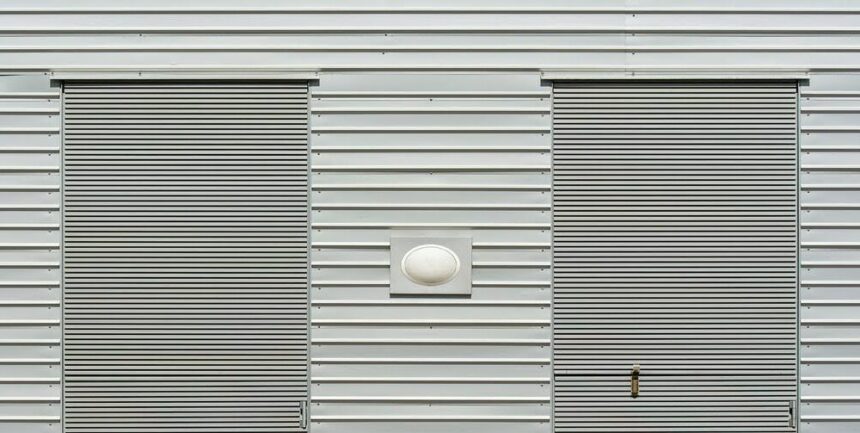Smart roller shutters represent a leap forward in home automation and security technology, integrating convenience and innovation into the modern household. Designed to provide homeowners with enhanced control over their environment, these advanced shutters can be operated remotely through a variety of devices including smartphones, tablets, or a centralized control system. With just a few taps or voice commands, you can adjust your shutters to the desired level, augmenting your home’s privacy, insulation, and security effortlessly.
The versatility of smart roller shutters extends beyond simple operation. Their adaptive features allow them to react autonomously to changing weather conditions, helping to maintain a comfortable temperature inside your home and contributing to energy savings. For instance, the shutters can close automatically in response to intense sunlight to keep your home cool, or they can open on a chilly day to let in warm sunlight.
Additionally, smart roller shutters provide a valuable layer of security. Whether you’re at home or away, you have the capability to close shutters swiftly to protect against inclement weather or potential intruders. Their robust design, coupled with the smart technology, makes it challenging for unauthorized entry, giving you peace of mind that your home is secure at all times.
Smart Roller Shutters Overview
Smart roller shutters are a modern innovation that combine traditional physical security with digital convenience. They are designed to enhance your home’s energy efficiency, privacy, and security.
History and Evolution
The concept of roller shutters has been around for decades, initially used for security and insulation purposes. Over time, manual rollers evolved into motorized versions, paving the way for today’s smart roller shutters. These modern shutters integrate with home automation systems, allowing you to control them via smartphones, tablets, or voice commands.
Components and Operation
The core component of smart roller shutters is the motor, which allows for automated movement. These shutters are typically made from durable materials such as aluminum or steel. Operationally, they work by rolling up or down along tracks mounted on the exterior of windows. Your smart roller shutters can be controlled remotely through a dedicated app, which communicates with the motor via wireless technologies like Wi-Fi or Bluetooth. Sensors can also be integrated to respond to weather conditions, automatically adjusting the shutters for optimal comfort and efficiency.
Benefits of Smart Roller Shutters
Smart roller shutters offer a range of functionalities that enhance your home’s efficiency, security, and comfort. Below, the key advantages are detailed.
Energy Efficiency
Smart roller shutters play a significant role in reducing energy consumption in your home. By providing an additional layer of insulation, they help maintain your home’s internal temperature, thus lessening the need for heating and cooling systems to work as hard. Your potential energy savings can be substantial, as the shutters can be programmed to open and close based on external temperatures or sunlight, maximizing natural heating and cooling.
Security Features
In terms of security, smart roller shutters are a robust deterrent against intrusions. They are typically made with strong materials that are difficult to breach. Your peace of mind is enhanced with features like automatic locking mechanisms and integration with home security systems. You can control the shutters remotely, which adds another layer of security as you can simulate presence by adjusting the shutters even when you’re away.
Convenience and Automation
The convenience and automation that smart roller shutters provide cannot be overstated. You can schedule them to open and close at specific times, or control them remotely via your smartphone. This means less manual effort on your part and the ability to adjust your home’s lighting and privacy easily. Integration with smart home ecosystems allows you to streamline the operation of your shutters with other automated devices in your household.
Installation and Setup
Installing smart roller shutters enhances both the security and energy efficiency of your home. Making the right choice between DIY and professional installation, and ensuring compatibility with your home setup, are critical steps in the process.
DIY vs Professional Installation
When considering the installation of smart roller shutters, you need to assess your skill level and the complexity of the product. DIY installation can be cost-effective and satisfying if you are handy and have basic electrical knowledge. Manufacturers typically provide a manual or an online guide to assist you. However, be mindful that any errors in installation can void warranties or lead to malfunctions.
On the other hand, professional installation ensures that your smart roller shutters are set up correctly and securely. Certified installers have the tools and experience to handle unexpected issues and can often provide valuable advice on maintaining your shutters. The additional cost can be justified by the peace of mind and time saved.
Compatibility Considerations
Before proceeding with the installation, it’s essential to ensure that the smart roller shutters are compatible with your windows and smart home system. Measure your window frames accurately and check the product specifications to confirm that the shutters will fit. Moreover, check the connectivity requirements of the shutters—many operate via Wi-Fi, Zigbee, or Z-Wave—so make sure they can integrate seamlessly with your existing smart home infrastructure, such as Google Home, Amazon Alexa, or Apple HomeKit. Compatibility with your system allows for convenient control and automation of the shutters.
Integration with Smart Home Systems
Smart roller shutters enhance your home’s functionality and security by seamlessly integrating with your existing smart home system. This allows you to manage light and privacy settings with ease, and synchronize with other smart devices for a cohesive smart home experience.
Smartphone and Voice Control
With smart roller shutters, you can control the opening and closing of your window coverings from your smartphone, wherever you are. You can also use voice commands to control the shutters via virtual assistants like Amazon Alexa, Google Assistant, or Apple’s Siri. This hands-free control provides you with convenience and accessibility, especially when your hands are full or you are not at home.
Connectivity Protocols
Connectivity is key in smart home integration, and smart roller shutters often use Wi-Fi or Bluetooth for direct connection with your smartphone or smart hub. Additionally, they might support other protocols such as Zigbee or Z-Wave, which can help extend the range and reliability of your smart home network. Ensure your smart roller shutters are compatible with your preferred protocol to ensure seamless operation within your smart home infrastructure.
Maintenance and Troubleshooting
Proper care extends the life of smart roller shutters and ensures their reliable operation. Below, find strategies to maintain your shutters effectively and ways to address the most common technical issues.
Routine Maintenance
You can keep your smart roller shutters in excellent condition by performing regular maintenance. Dust and clean the shutter slats every few months with a soft cloth or brush to prevent the buildup of debris, which can cause the mechanism to strain. It’s crucial to check the tracks for obstructions and clean them as necessary. Additionally, lubricate moving parts yearly with silicone-based lubricants to maintain smooth operation. For the smart components, ensure that your firmware is always up-to-date, often provided by the manufacturer, which can improve performance and add new features.
Common Issues and Fixes
When troubleshooting, it’s important to identify common issues smart roller shutters may encounter.
Sensor Problems: If your shutters aren’t responding to environmental triggers, the problem might be with the sensors. Clean them gently with a soft cloth to remove any obstruction and reset their sensitivity in the system settings if necessary.
Connectivity Issues: Shutter not responding to your smart home system could indicate connectivity problems. Check your Wi-Fi strength and router settings, and if needed, reconnect the shutters to your network.
Mechanical Failures: If the shutters are stuck or moving slowly, check for obstructions in the tracks. If the tracks are clear, a failure in the motor or gears might be the culprit. In such cases, contact the manufacturer or a professional technician for repairs or replacement parts.
Remember, if your troubleshooting efforts do not resolve the issue, or if you encounter more complex problems, professional assistance is advised. Avoid handling intricate electronic components or high-voltage areas unless you have the proper training.








